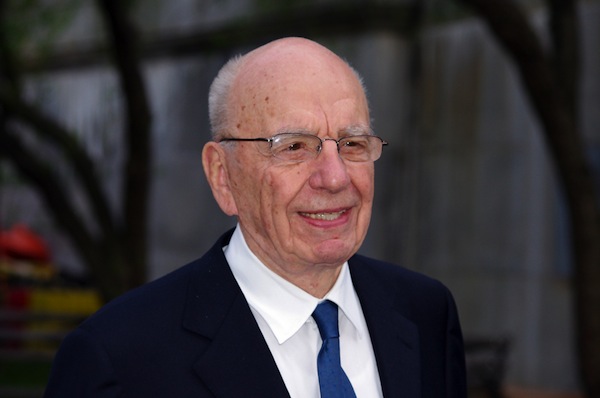![]() Every Friday, Mark Coddington sums up the week’s top stories about the future of news.
Every Friday, Mark Coddington sums up the week’s top stories about the future of news.

The Guardian opens up its news agenda: The Guardian took a significant step in the evolution from a closed to open newsroom this week, allowing the public access to a live account of its internal list of planned news stories. In his announcement of the experiment, Dan Roberts said that it would start with a short trial and that it wouldn’t include exclusives, embargoes, or legally sensitive unconfirmed material. He also concluded with the rationale behind the bold move: “It seems there are more people wanting to know where their news comes from and how it is made. Painful as it might be for journalists to acknowledge, they might even have some improvements to make on the recipe too.”
Here’s the newslist — yup, it looks pretty much like a simple version of standard newsroom budget. Roberts talked to Mashable about how helpful Twitter has been in pulling the plan off, and Mathew Ingram of GigaOM praised the move as one other news organizations should emulate, arguing that not only does it benefit the news organization with more ideas and feedback, but that users are beginning to expect this kind of openness.
Others were more skeptical. Elena Zak of 10,000 Words wondered if the Guardian’s experiment is just a dressed-up version of the status quo, since the paper’s editors are still maintaining all of the control over what gets published and what doesn’t. And j-prof Andrew Cline took issue with Roberts’ statement that this move is “a bit of a leap,” pointing to a student news project that’s opened its coverage plans via Facebook since it began. “It was a ‘bit of a leap’ 10 years ago. Today it’s what I’m teaching my journalism students,” Cline wrote.

Circulation scandal at the Journal: News Corp.’s series of scandals reached the Wall Street Journal this week with a report that the Journal channeled money through a European company to buy copies of its own paper, in exchange for favorable coverage in the paper’s pages. Just before the report surfaced, the man at the center of the scandal, a European executive at Journal parent company Dow Jones named Andrew Langhoff, resigned, and the whistleblower was fired in January. The Guardian, which broke the story, also reported that the Audit Bureau of Circulations, the circulation watchdog, will investigate the issue.
The Journal itself confirmed many of the scandal’s elements with its own story published the following day. Poynter’s Steve Myers put together a good summary of the story and a quick roundup of the reaction, and Ryan Chittum of the Columbia Journalism Review provided some more reporting on the Journal’s coverage of its alleged circulation-inflating partner.
Reuters’ Jack Shafer noted that the Journal’s favorable coverage was in a special section, where fewer people were likely to read it and take it seriously, and that even with the scandal, Wall Street Journal Europe’s circulation only reached 75,000. Several observers pointed out, as Chittum put it, that News Corp. keeps showing a habit of covering up its misdeeds rather than being honest about them. The result of this is that everyone will assume the worst about any possible News Corp. scandal, according to Reuters’ Felix Salmon. The next step, Salmon said, is for the scandals to spread beyond newspapers to Fox or Sky or HarperCollins, which would be truly disastrous for Rupert Murdoch.

Steve Jobs, devotion, and control: The tributes to Apple co-founder Steve Jobs continued to pour in late last week after his death last Wednesday. Technology Review editor Jason Pontin continued with the theme of Jobs’ love for creating products themselves, and tech guru Guy Kawasaki reflected on 12 business lessons he learned from Jobs. The most interesting of those lessons was that customers can’t tell you what they need: “If you ask customers what they want, they will tell you, ‘Better, faster, and cheaper’—that is, better sameness, not revolutionary change. They can describe their desires only in terms of what they are already using.”
Others reflected on the flood of appreciation for Jobs upon his death and the devotion of Apple fans: TechCrunch’s MG Siegler talked about Jobs as “the first truly transformative figure to die in an age of transformative technology, and John Biggs mused about Jobs as a pop-culture artist. At Fast Company, j-prof Adam Penenberg wrote about the way the uniqueness of Apple’s products have had an addictive effect on us.
Some commentary was more critical. Gawker’s Hamilton Nolan pointed to Apple’s track record of censorship and authoritarianism and Jobs’ brusque personal style, and the Knight Center’s Summer Harlow documented Jobs’ often strained relationship with journalism. Los Angeles Times media critic James Rainey went deeper into Jobs’ controlling behavior toward journalists, noting, as Dan Gillmor put it, Apple’s “uncanny ability to get normally skeptical journalists to sit up and beg like a bunch of pet beagles.”

New and old media within a protest movement: The Occupy Wall Street movement has been one of the biggest ongoing stories in the U.S. over the past couple of weeks, featuring heavily in online discussion and garnering increasing coverage from traditional media. The story has some relevance for the future-of-news discussion as well: The New York Times’ David Carr looked at the production of The Occupied Wall Street Journal, noting with some nostalgic pride the enduring role of newspapers in protest movements. News designer Mario Garcia was also surprised and pleased that so many young protesters would use various media, including a newspaper, as part of their movement’s voice.
The Times also examined another media tool being used by Occupy Wall Street protesters — Pastebin, a site created as a way for programmers to save and share code, but now being used as a (mostly) anonymous place to share protest information. Nitasha Tiku of BetaBeat pointed out that Pastebin was also used as a hangout for IRC, particularly for the hacking groups Anonymous and LulzSec, well before Occupy Wall Street came on the scene.
Meanwhile, Erika Fry of the Columbia Journalism Review reported on the New York Police Department’s efforts to issue and enforce press credentials at the protests, once again raising thorny questions about who is and isn’t a journalist.
Reading roundup: It’s been a somewhat slower week this week news-wise, but there were still a few other interesting issues that are worth keeping up on:
— Facebook released its long-anticipated iPad app this week: The New York Times has some of the basic features (it’s free), and All Things Digital detailed the process Facebook developers went through to get their own app and other Facebook-based apps onto Apple devices.
— A few bits on news paywalls: PaidContent reported on Press+’s efforts to sell paywalls to college newspapers (Press+ is the name of the now-bought-out Journalism Online’s paid-content system). Poynter’s Jeff Sonderman explored how news organizations decide whether to take paywalls down for huge news events, and NetNewsCheck examined the market-wide effects of one newspaper’s paywall in Albuquerque, New Mexico.
— We’ve heard a lot of talk about “Digital First” lately, particularly from folks within the Journal Register Co. Steve Yelvington, who works within fellow newspaper chain Morris Communications, offered a sharp, succinct explanation of what a Digital First transition entails. One key concept: accepting audience responsibility, not just news responsibility.
— The Lab had a few fantastic pieces this week (no, Josh didn’t tell me to write that) — j-profs Nikki Usher and Seth Lewis on what journalism can learn from open-source and maker culture, Megan Garber looking for lessons in failed Wikipedia-like efforts, and New York Times developer Jacob Harris went on a delightful rant against word clouds.
Rupert Murdoch photo by David Shankbone, Steve Jobs photo by Nopphan Bunnag, and Occupy Wall Street photo by Jeff Jarvis used under a Creative Commons license.